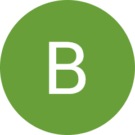By now, you’ve heard about SEO countless times. It is essentially everywhere, and all the best websites have it employed. However, you’re still scratching your head on what to do with SEO, especially when it comes to on-page optimization. Well, you’re in luck!
Today, we’re going to talk about the best practices of on-page SEO, sharing what you need to know to boost your rankings:
1. Keep Your URLs Short and Concise
Your URLs should be short and easy to read, and there’s a good reason for that. The longer a URL is, the fewer chances you have of ranking high in Google. Why is this so? Google is a search engine, and if your URL is too long and clunky, users won’t be able to find it. Or, they’ll most likely lose interest and look at a different result instead.
Google considers short, easy-to-read URLs to be more professional and more trustworthy. They also tend to rank higher on search engine results. So, keep your URL short and sweet.
2. Implement Videos and Pictures
We all know that videos and pictures tend to rank higher than just text—so it goes without saying that if you want to rank high on Google, you must be using visuals on your website.
However, you need to make sure that your visuals are also optimized for mobile devices. Why? The majority of online users nowadays access the internet through their mobile devices, whether it be a tablet, a phone, or even a laptop.
When optimizing for mobile devices, you want to make sure that your images aren’t too heavy. As you know, the slower your website loads, the less chance you have of ranking high on Google.
3. Put Keywords in Your Title Tags
Keywords are essential for ranking high on Google, and when people search for something on Google, they expect to see keyword-optimized titles with the most relevant information.
You don’t need to go overboard with your title tags. You only need to put one or two keywords in it, but they must be relevant to the page. That way, when people search for the appropriate keywords, you’ll show up!
4. Wrap Your Headings If They Share Keywords
Headings are a useful tool to optimize your website, especially the H1 heading. This heading is the biggest in size, and it applies to the title of your page. The bigger this heading is, the more information Google will be able to pick up.
However, if you have multiple headings that share keywords, it is vital that you use the H1 and H2 hierarchy. That way, Google can better index your page!
Conclusion
If you’ve never optimized your website for Google before, you might be feeling lost. But you don’t have to worry! On-page SEO is something you can tackle. All you need is to take some time to understand what it is and how to use it.
Remember, on-page SEO is only one part of the SEO puzzle. You can make your website much more attractive to search engines by implementing off-page SEO, too. Nevertheless, do implement what we’ve shared today, and you’ll find your rank to go higher and higher the better you do so!
Fox Web Creations is a full-service online agency offering marketing, SEO, and website services. If you are looking for search engine optimization in Kansas City, get in touch with us today!















